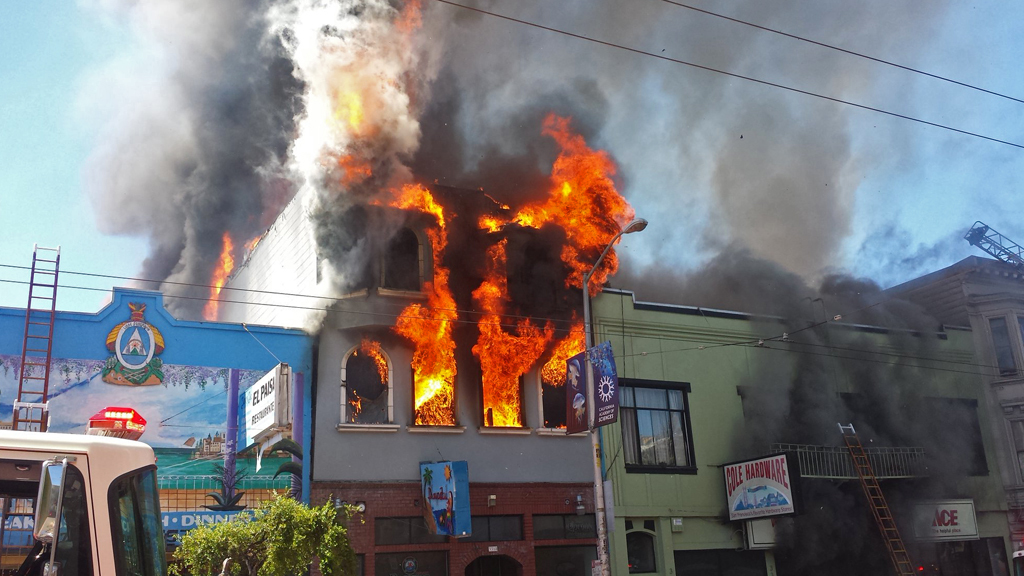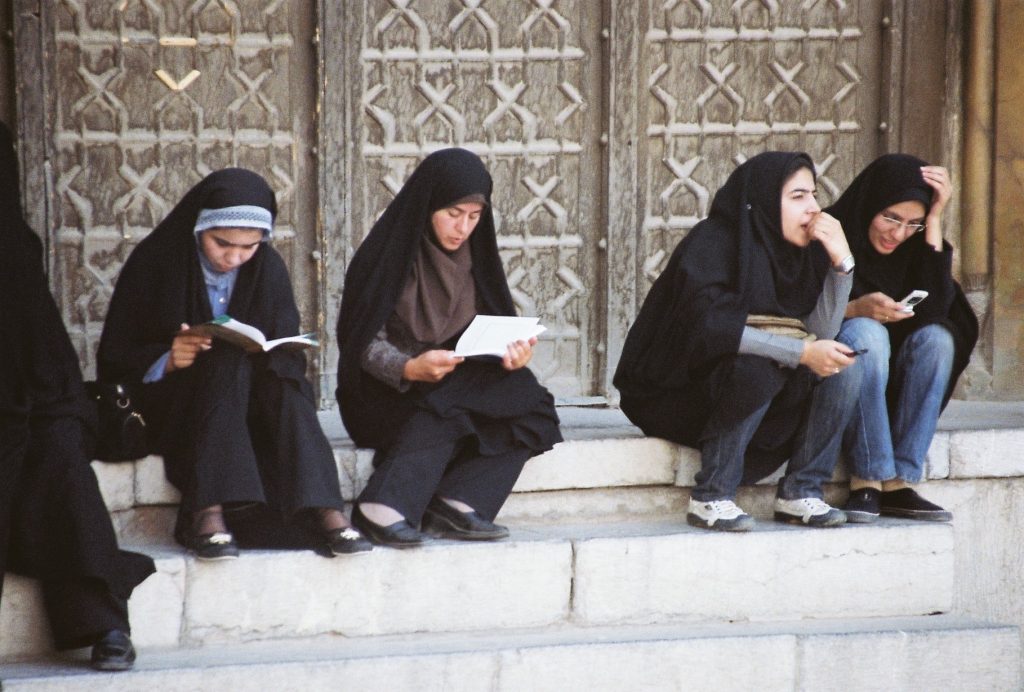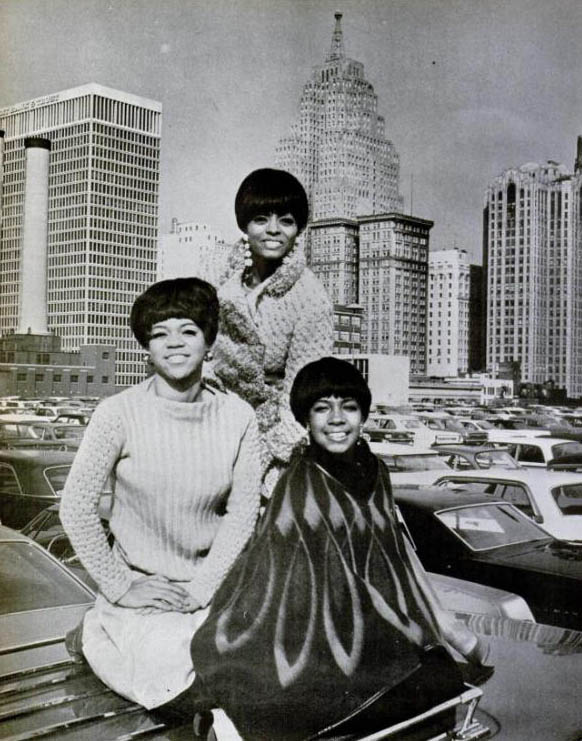This essay by Caille Millner first appeared in our Winter 2016 print issue.
I need to tell you about someone whose name I can’t speak. The lack of a name is inconvenient, but it’s not the most important thing about him; he gave it up so long ago. Everything important that I can tell you I have wrested from a fight against time and language, and I’m still only halfway there.
Halfway. We were half-grown when we met: eleven years old. Some concerned adult had determined that he was at risk. We all are, but in his case there were metrics. He had emigrated from Mexico. He lived with too many siblings; there was a rotating cast of uncles and cousins in his life. This seemed dangerous—we lived in San José before it became a booming city, when it was still threaded with apricot orchards and poverty. Some of his uncles and cousins had joined La Nuestra Familia, the Norteños, the gangs that offer protection to Chicanos and Mexicans who lived in Northern California. Joining the gang meant that they had joined a violent feud, with the Sureños from Southern California and also with the Salvadoran gangs—La Mara Salvatrucha, or MS-13.
I should have asked him questions about that. The truth is that I failed to find the language to do so. The first reason for this failure is that I was impressed with the ornate speech used by so many of those uncles and cousins. They never spoke about gangs or violence or illegal anything. Instead they had a seductive patois of slang and simple commands and complex phrases about their respect for tradition, their commitment to duties as men. To my eleven-year-old ears these were ancient, powerful words; it sounded like the language of legend. Warriors and glory.
I could only speak about homework and grades. Such words could not compete with theirs even in my own imagination. How could I use them to convince someone else?
When I was near them I couldn’t even say what it was that captivated me about the drudgery I was supposed to be championing. When I was alone it became all too clear: that drudgery was my way to be special. What I really liked was the approval I received from those concerned adults for caring. The kind of regard that allowed me to be chosen as a positive influence in another eleven-year-old’s life was intoxicating.
Looking back, I see that of course I made sense as a translator of the other life. I was going places even then. The people in my family were steady and ambitious. They were teaching me the language of the higher classes, but more importantly, they were teaching me their timelines. I understood that for many years my life would be a slowly unfolding landscape of education and that in the distant future I would have nothing to do with boys like him.
Not that this mattered when we met. I fell hopelessly and immediately in love with him. He was smaller than I was: a thin body, all angles like an arrow tip. His was a face of beveled edges rather than common features—the only curve on him was a radiant smile. As soon as I met him I wanted to see more of it, and I hung around for as long as I could.
To even speak about it now is to risk embarrassment, for this was eleven-year-old love: a love that bloomed over secondhand video game consoles and dimly lit strip malls. We gawked at passing teenagers; we pooled our quarters to split Orange Juliuses and McDonald’s French fries. It was the love of one child—puffy, awkward, patiently hoping to bloom into beauty—for another child who was beautiful and lean and waiting only for others to be overcome by his charm. He never had to wait long. Where I was aloof and serious, he was open and easy.
He knew how to be eleven years old. He took joy in the moment—in the good slice of pizza, the trip to the arcade, the tickle fight. As part of a big family he was happy to be in company with lots of people. To his relatives I must have seemed like the strange one: quiet, introverted, demanding of difficult pleasures that were a long time in coming. I never talked to him, or to them, about love.
The next year he joined the feud.
We lost him, one of those concerned adults told me.
I found the judgment unfair. Even today I can tell you in which prison his body may be found.
He is doing time. Yet I wonder if he sees time in the way that I do, in the way that all of those concerned adults do. We cling to years because our imagination does not extend to the language of duty and obligation. We hoard our years because they belong to us alone, not to the ages.
At eleven years old it is easy to believe in the ages; I was enthralled by them myself. And in many ways his transformation happened much faster than mine did. At twelve years old he had a new name, new clothes, new friends, a new body. New constraints and intimacies. He had a duty now, and it stood as an immutable fact of life, something beyond individuality. When it was clear to me that I should abandon him so that I could continue on my own slow line of time I did so without regret, and for many years I stopped trying to find words to talk about him. I spent much time on my education and my goals. I busied myself with the intricacies of language and the books of long-dead men.
Then as our paths diverged my own line of time sped up. The years that are ticking slowly for him, in his cell, are moving much faster on the outside. In the land of his feud, time has become hard to hold. Out here it’s picked up speed, become relentless. Like me, San José became educated and upper middle class in the course of a generation. The orchards were paved over for expensive housing; the immigrants from Mexico and El Salvador moved to cheaper cities farther south. The crime rates dropped, the feud grew quiet.
Things were different now, I thought. The wounds from the feud would heal. There would be no need for these battles that seemed to have no purpose. Too many were gone but at least it would slow down.
Years passed. I moved to San Francisco. I chose to live in a neighborhood that seemed to have the familiarity of my birth neighborhood and none of its problems. My neighbors came from Mexico and Panama and El Salvador and Nicaragua and Brazil. It was a neighborhood of modest and miraculous prosperity. Everyone worked as often as they could. Their children played on the sidewalks day and night, and the adults were full of memories of the children they had left behind in the old countries. Their lives ran on the rhythms of phone cards and remittance payments and scratch-off lottery tickets.
When I moved in I asked many of them about the feud. We had similar worries about it, and similar feelings of denial. It was close but we believed that it was far enough away. Two gangs—one linked to MS-13, the other linked to the Norteños—operated on the blocks that bounded us. But because there had been no violence in our small bubble for years we thought it would never come to us.
Around 8 pm on June 16, 2007, a fifteen-year-old named Edivaldo Sanchez was standing with a friend outside of his family’s apartment on Twenty-fourth Street. Eddie, as we called him, often stood outside of that apartment in the evenings. It was a practical choice. He had five siblings and a rotating cast of relatives in his life. He needed space, like any teenager.
Eddie was a student at Horace Mann Middle School. He was a recent immigrant from Puebla, Mexico, a city whose important industries include maquiladoras and drug trafficking. After her husband died, Eddie’s mother had brought the family to San Francisco. She thought that the move would give her children the peaceful years they needed for an education and a more prosperous future.
What is there to say about him? Eddie made friends in the neighborhood fast. His personality was gentle. He was crazy about soccer and music, eager to help fellow students fix their old electronics or put together a pick-up game. He smiled easily and often. I remember thinking how delightful it was to see that. He was at the age for boys when smiling tends to stop.
We had a nodding acquaintance when we passed each other on the street. He was shy, and being a recent immigrant he was also tentative about the way he sounded. I didn’t want to make him feel nervous by speaking too often. It was another one of my failures of language.
Two men in a stolen Honda pulled up beside the boys that night. We will never know what they said, or if they said anything at all. In the neighborhood we decided that the men asked who they claimed. We decided that because we knew that the boys claimed no gang associations and because it was the only question we knew that fit with what happened next.
The passenger in the car pulled out a gun. The boys ran for their lives and he shot at their backs.
Eddie’s friend escaped.
Eddie was hit. He staggered for half a block, collapsed, and bled out in front of a taquería on Twenty-fourth Street at the corner of Balmy. He was dead before the emergency response team arrived.
Eddie died near a mural painted with folk spirits, one of whom is giving birth to the world. It’s the first mural at the entrance to Balmy, a short block that’s also a gallery for more than sixty murals. These bright, splashy scenes stretch from the roof to the foundation of almost every building. The murals were begun by a collective of artists known as La Mujeres Muralistas, whose desire to add more peaceful, domestic images to the macho mural art scene in San Francisco during the 1970s grew into a massive visual celebration of Latin American myth and history. Eddie died among a kaleidoscope of life from all around the Americas, the red of his blood joining an explosion of yellows and blues and purples and greens. While he died he was watched over by Archbishop Oscar Romero, by Frida Kahlo, by Diego Rivera, by La Virgencita of Guadalupe, by children escaping war and poverty, and above all by weeping women, women who are weeping for Mexico and for El Salvador and for the innocents massacred in those countries and in this one.
When I stepped out of my house the next morning the altar for Eddie had already been assembled. The sun was bright but the red candles were blazing underneath his photo on the lamppost. Most of them filled tall glass containers plastered with a picture of the Virgin of Guadalupe. Every corner store on Twenty-fourth Street sold those candles, but that day they handed them out for free.
Within a few hours it was impossible to walk down that strip of sidewalk. The mourners spread a blanket of flowers and candles and homemade signs that crowded out all the space in front of the taquería. Eddie’s family members hung small cardboard signs on the lampposts nearby to rest his soul in peace. The schoolgirls he had helped at Horace taped up pictures of him.
For a few weeks, I passed by that every day. We all looked up when we saw him. I think the memory of seeing him on the same corner, alive and wiry, kept us from cleaning up his memorial in the normal frame of time. We left Eddie’s altar up until it had fully disintegrated. As the days and then weeks passed it underwent a metamorphosis. Bunches of flowers shrank and died. They stained the sidewalk with the violet of exploded petals and the yellow powder of broken stamens. The cathedral of candles melted onto the sidewalk, spreading out into red gooey puddles. The goo hardened into something brittle, geological. If I squinted, the sidewalk in front of the taquería looked like a mural on Balmy.
And above the mess floated Eddie’s face—thin, a little pimpled, forever smiling….
Read the rest of Caille Millner’s essay “Four Murders,” here.




